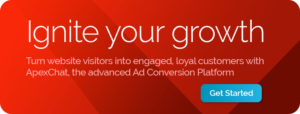Unravel the complexities of a Content Management Systems (CMS) migration process, and discover how to plan a successful CMS change.
What Is a Content Management System?
A CMS software platform enables you to create, edit and publish digital content such as webpages, documents, images, videos and audio files. It’s a powerful tool for creating and managing content on a company’s website. Since websites are usually hosted on a CMS, it not only presents a platform for showcasing products and services but also significantly impacts customer experience, search engine rankings and the overall digital presence of a business.
In the digital marketplace, a CMS can also play a pivotal role in business operations beyond marketing and sales. For instance, our clients integrate the Live Chat solution into their websites to enhance their customer service and support, as well as their marketing and sales. Finding a reliable, secure, user-friendly CMS within your budget is vital.
Still, as with any business partnership, it may be time to migrate to a different CMS solution. Here’s what you need to know.
What Is a CMS Migration?
A content management system migration is an often-overlooked but necessary part of running any website. It involves taking an existing website and migrating or moving its content to the new platform.
Migration is necessary when you need to:
- Improve web performance,
- Add more features,
- Increase backend access,
- Rebrand or refresh a website,
- Secure and protect data and content from security breaches, hacks, malware and more,
- Integrate new technologies such as CMS plugins, or
- Streamline content updates for better efficiency.
A successful migration requires careful planning and analysis of the current website structure and content. It’s vital to ensure you maintain search engine optimization (SEO) throughout the process. Similarly, you want all functionality, such as our Live Chat widget, Google Analytics, links, forms and images, to remain intact after the migration. Broken links and crawl errors can hurt your SEO and frustrate customers.
CMS Migration Process
When you decide to migrate your website, the process typically consists of four stages: preparation, migration, testing and launch.
- Preparation: Here, you’ll determine what needs to be migrated from the old CMS and create an inventory of existing content. Additionally, a final backup should be taken before the migration begins.
- Migration: Once you’re ready, the migration process begins. Create your new website before transferring content, either in batches or all at once depending on site size. As a best practice, using the same URL structure when moving pages from one platform to another for SEO purposes is essential.
- Testing: After the migration is complete, you’ll need to go through and test all pages for accuracy. Ensure the new site works correctly and looks as it should before going live.
- Launch: You can launch your new website once everything is tested and working correctly! Be sure to check back in once the migration is complete for any updates or fixes you may need to make.
Migrating your website can be a daunting task. Still, staying competitive and providing the best user experience is crucial. A CMS migration will allow you to refresh your site’s look and feel, add new features and optimize performance for better efficiency. The process can initially seem overwhelming, but it can be a successful endeavor with proper guidance and planning.
CMS migrations take time and effort but are essential to keeping your website up-to-date and performing well. By planning and migrating correctly, you can ensure your site is ready for success in the long run. Investing in a good CMS migration can help you create an optimized, modern website that will impress your users and keep them coming back.
Seven Reasons to Change a CMS
You might be wondering why a business would want to change its CMS. Earlier, we listed seven common reasons — here’s a deeper dive into each of them.
1. Poor Web Performance
If we imagine the internet as a virtual marketplace, a company’s website is like its office building. It has to be clean, well-maintained and attractive to customers. The same goes for the web — a site should always be fast, visually appealing, ADA compliant, and easy to use and secure. Responsiveness is key; if a business’s CMS can’t provide that, it might explore other options.
2. Lack of Features
Websites are no longer informational brochures — they must have features and functionality that deliver value to site visitors and the company’s bottom line. If the existing CMS is too restrictive in what you can do with it, it might be time for an upgrade. For instance, a boutique medical center might want a system that allows patients to book appointments online or request renewals for specific medications, and a legacy CMS may not be able to support these features.
3. Limited Backend Access
The backend is the heart and soul of any website, where all the data, content and users interact. Continuing with the office analogy, it’s like the back room where all the paperwork is kept. Access to the backend is necessary to change the website and its content. Additionally, the backend could be more user-friendly and intuitive, especially for smaller service-based businesses without a dedicated IT staff. Ease of use and understanding should be at the top when looking for a new CMS.
4. Rebranding or Refreshing Your Site
Over time, a company’s identity may change or evolve to keep up with modern trends and audience expectations. In such cases, a CMS migration can be a cost-effective solution. It can provide new capabilities for a website and help the company remain on brand.
5. Security Concerns
Another reason to migrate is for security. Cyber-attacks are commonplace, and outdated CMS solutions can be vulnerable to attack if not kept up to date. Migrating the site ensures that security patches are implemented so your website is as secure as possible. The security challenge is twofold: staying on top of patch notifications as they come out and making sure the migration goes smoothly without creating any security holes.
6. Integrating New Technologies
Migrating to a new CMS can help integrate newer technologies into the site. As technology changes, staying current and competitive means leveraging the latest web design and development tools, plugins, and widgets that add value to the site and visitors.
In recent years, AI chatbots, live video chat services and other automation tools have allowed service-based businesses to digitize their customer service and lead generation. At Blazeo (formerly ApexChat), our customers benefit from live chat agents available 24-7 to answer questions, capture leads and improve customer satisfaction. While our widget integrates with most CMS solutions, legacy systems may need to be migrated to take advantage of this technology.
7. Budget-Friendly Solution
Finally, web hosting can be costly. With separate charges for add-on services, storage and bandwidth, the cost of hosting a CMS site can quickly add up. But with an updated system, you can find more affordable web-hosting solutions that take advantage of current technologies like cloud hosting and Content Delivery Networks (CDNs). These services are often far less expensive than traditional methods, allowing businesses to save on hosting costs while still getting all the benefits of an up-to-date platform.
Integrating Blazeo (formerly ApexChat) on Your New Site
Once you’ve completed your CMS migration, consider adding Blazeo (formerly ApexChat) to your website. Unlike an AI chatbot, we give clients the option of having dedicated chat agents available to answer visitors’ inquiries through text or video when they need it most. Our chat agents are trained to capture leads based on customer conversations and tailor their responses depending on the customer’s needs.
Our 24-7 availability also makes Blazeo (formerly ApexChat) a great way of offering lead capture around-the-clock, no matter what time zone your customers live in or how busy your practice is. Don’t risk losing business or irritating customers with unanswered inquiries or emails. Let’s make sure all questions are answered promptly.
Finally, Blazeo (formerly ApexChat) helps businesses build trust with their website visitors by allowing them to communicate directly with an actual person. A live chat feature on-site will enable customers to get answers quickly, boosting the customer experience and making them more likely to convert.
With our easy-to-install widget compatible with popular content management systems, integrating Blazeo (formerly ApexChat) on your site is a breeze! So don’t wait — request a demo and provide your customers with the best customer service possible, or learn more about the benefits of adding live chat to your Squarespace, WordPress, or Wix site.



